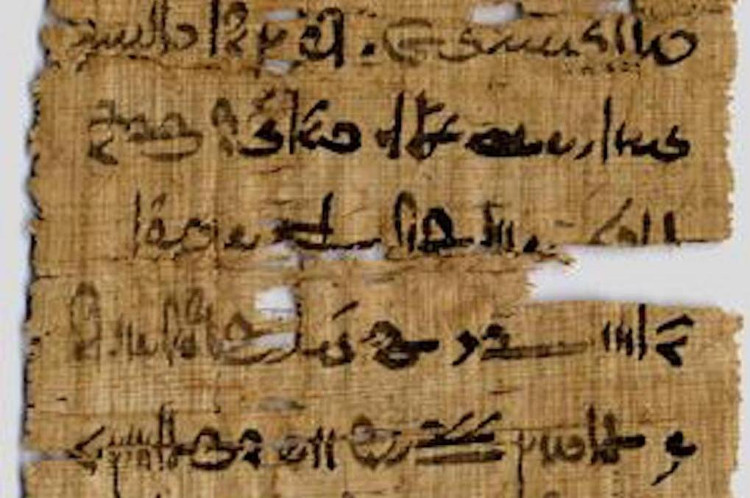Raw materials for blue ink production of ancient Egypt
Photos of X-ray microscopy revealed copper components in ancient Egyptian carbon ink written on papyrus.
Historically, archaeologists have argued that the ancient Egyptians used black ink completely carbon-based until the 4th and 5th centuries. In a new study published in Scientific Reports on November 10 , scientists at the University of Copenhagen, Denmark, found something quite interesting, contrary to previous thoughts. It is the Egyptians mixing copper (Cu) into their carbon ink.

Ancient Egyptians used ink mixed with copper to write on papyrus books.(Photo: University of Copenhagen).
The research team used X-ray microscopy to examine Egyptian papyrus documents originating from various geographical areas, dating back about 300 years. They are in the Carlsberg University of Copenhagen collection of paper books.
Some pieces of papyrus originated from Horus's diary pages, an Egyptian soldier who lived in the military barracks in Pathyris city. The remaining pieces were restored manuscripts from the Tebtunis temple library.
"The composition of copper carbon inks does not differ significantly. This suggests that the ancient Egyptians used the same technology to produce ink all over Egypt from about 200 BC to the year of the year. 100 AD, " said Thomas Christiansen, the study's lead author.
The composition of copper in the Egyptian ink is taken mainly in minerals such as cuprite (Cu 2 O), azurite (Cu 3 [CO 3 ] 2 [OH] 2 ) and malachite (Cu 2 CO 3 [OH] 2 ). These minerals appear along the entire length of the eastern desert and in Sinai, Egypt. Ancient people used them to create blue and green pigments.
According to the research team, the understanding of the exact composition of ancient ink types can help us to present the best method to preserve the ancient Egyptian papyrus remains to this day.
- Egyptian blue 'alive' from the tomb
- Homosexuality in ancient Egypt
- Learn the disasters that destroyed ancient Egypt
- 6 things we do not know about the people of ancient Egypt
- 3 everyday items you won't believe are from ancient Egypt
- Mysterious mysteries of ancient Egypt
- Discovered an ancient tomb over 3,500 years old in Egypt
- New timeline for the beginning of ancient Egypt
- Find ancient Pharaoh and god statues in Egypt
- Unexpected discovery of the
- Why did the ancient Egyptians worship lotus images?
- The dangers you face if living in ancient Egypt
 Discovered an ancient centipede fossil 99 million years old
Discovered an ancient centipede fossil 99 million years old Discovered bat-like dinosaurs in China
Discovered bat-like dinosaurs in China Discovered a 200-year-old bronze cannon of the coast
Discovered a 200-year-old bronze cannon of the coast Discover 305 million-year-old spider fossils
Discover 305 million-year-old spider fossils